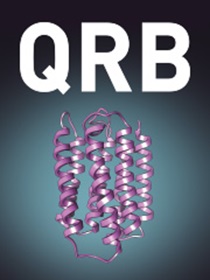空间控制照明显微镜
IF 5.3
2区 生物学
Q1 BIOPHYSICS
引用次数: 5
摘要
使用荧光光学显微镜进行活细胞和活组织成像,在图像质量和光损伤之间存在固有的权衡。空间控制照明显微镜(SCIM)的目标是在获得良好的图像质量和最小化光损伤风险之间取得适当的平衡。在传统的成像中,照明是用空间均匀的光剂量进行的,导致空间可变的检测信号。SCIM采用一种替代成像方法,其中以空间可变的光剂量进行照明,从而产生空间均匀的检测信号。在SCIM中,生物标本的实际图像信息主要编码在光照剖面中。SCIM在荧光生物标本成像中使用实时空间照明控制。这种替代成像范例减少了成像过程中的总体照明光剂量,通过最小化光损伤而不影响图像质量,从而促进了活生物标本的长时间成像。此外,SCIM图像的动态范围不再受检测器(或摄像机)动态范围的限制,因为它采用了统一的检测策略。SCIM的大动态范围主要是由照明轮廓决定的,对于活体和固定生物标本的成像都是有利的。本文综述了SCIM的概念、工作机制及其在各类光学显微镜中的应用。本文章由计算机程序翻译,如有差异,请以英文原文为准。
Spatially-controlled illumination microscopy
Abstract Live-cell and live-tissue imaging using fluorescence optical microscopes presents an inherent trade-off between image quality and photodamage. Spatially-controlled illumination microscopy (SCIM) aims to strike the right balance between obtaining good image quality and minimizing the risk of photodamage. In traditional imaging, illumination is performed with a spatially-uniform light dose resulting in spatially-variable detected signals. SCIM adopts an alternative imaging approach where illumination is performed with a spatially-variable light dose resulting in spatially-uniform detected signals. The actual image information of the biological specimen in SCIM is predominantly encoded in the illumination profile. SCIM uses real-time spatial control of illumination in the imaging of fluorescent biological specimens. This alternative imaging paradigm reduces the overall illumination light dose during imaging, which facilitates prolonged imaging of live biological specimens by minimizing photodamage without compromising image quality. Additionally, the dynamic range of a SCIM image is no longer limited by the dynamic range of the detector (or camera), since it employs a uniform detection strategy. The large dynamic range of SCIM is predominantly determined by the illumination profile, and is advantageous for imaging both live and fixed biological specimens. In the present review, the concept and working mechanisms of SCIM are discussed, together with its application in various types of optical microscopes.
求助全文
通过发布文献求助,成功后即可免费获取论文全文。
去求助
来源期刊

Quarterly Reviews of Biophysics
生物-生物物理
CiteScore
12.90
自引率
1.60%
发文量
16
期刊介绍:
Quarterly Reviews of Biophysics covers the field of experimental and computational biophysics. Experimental biophysics span across different physics-based measurements such as optical microscopy, super-resolution imaging, electron microscopy, X-ray and neutron diffraction, spectroscopy, calorimetry, thermodynamics and their integrated uses. Computational biophysics includes theory, simulations, bioinformatics and system analysis. These biophysical methodologies are used to discover the structure, function and physiology of biological systems in varying complexities from cells, organelles, membranes, protein-nucleic acid complexes, molecular machines to molecules. The majority of reviews published are invited from authors who have made significant contributions to the field, who give critical, readable and sometimes controversial accounts of recent progress and problems in their specialty. The journal has long-standing, worldwide reputation, demonstrated by its high ranking in the ISI Science Citation Index, as a forum for general and specialized communication between biophysicists working in different areas. Thematic issues are occasionally published.
 求助内容:
求助内容: 应助结果提醒方式:
应助结果提醒方式:


